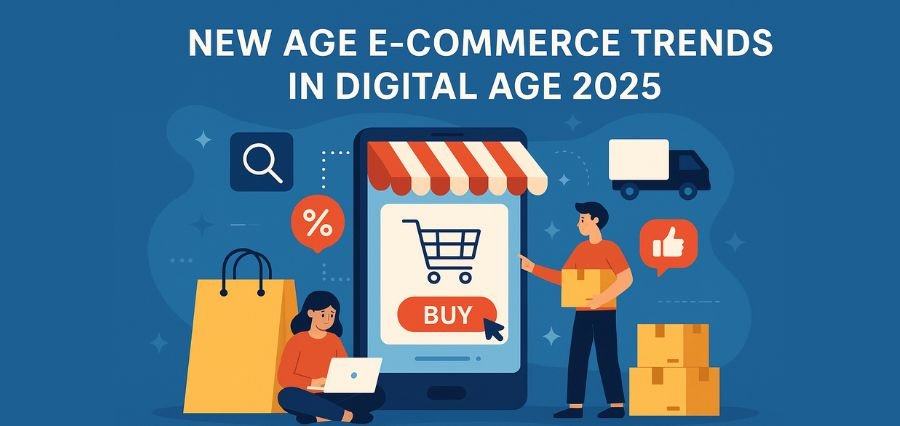In today’s globalized world, supply chain innovation is not an option it is a necessity. Increasing demand uncertainty, changing geopolitics, and rising customer expectations force companies to keep reinventing their supply chains. At the forefront of this revolution is digital technology and it is enabling organizations to create resilient, adaptive, and intelligent supply networks.
This article examines how technology innovation is driving change across supply chains globally and what business needs to do to survive.
Need for Innovation for Global Supply Chains
Global supply chains have undergone a decade of unprecedented disruption—natural disasters, pandemics, political turbulence, and shortages of raw materials. The disruption highlighted inherent vulnerabilities of traditional, linear supply chain strategies.
The need for end-to-end supply chain innovation is because the old models no longer apply. Companies need to implement smarter, networked, and responsive systems. Innovation is not so much about adopting new tools; it’s about reframing the very idea of supply chain strategy, culture, and operations.
Digital Transformation: The Engine of Change
Digital transformation is the driving force for supply chain innovation globally. It entails the integration of technologies like artificial intelligence (AI), the Internet of Things (IoT), cloud computing, and blockchain in end-to-end supply chain processes.
For example, AI helps with improved demand planning and stock management via real-time analysis of data from various sources. IoT sensors give visibility to product in transit to enable pre-emptive business decisions. Blockchain gives secure, transparent transactions among suppliers, manufacturers, and distributors.
These technologies help organizations transition from reactive to predictive supply chain management enabling continuous global supply chain innovation.
From Siloed to Synchronized: A Change of Mindset
One of the biggest barriers to supply chain innovation has been the siloed manner in which most systems have generally operated. Procurement, logistics, manufacturing, and customer service operated in silos. Digital transformation breaks down the silos so that data can flow unencumbered and decisions can get aligned.
By embracing combined digital platforms, businesses are able to have end-to-end visibility in business. Depending on the visibility, they can make adjustments in real time, synchronize manufacturing with the changing needs, and avoid potential disruptions before they become major issues.
This alignment is one of the main pillars of the world supply chain innovation, where cross-functional coordination and responsiveness are competitiveness drivers.
As customers today demand velocity, customisation, and transparency, supply chains must be re-designed to respond to the end user. Digital technologies allow businesses to build supply networks that are responsive, adaptive, and customer-focused.
Predictive analytics, for instance, allows firms to forecast the behavior of customers and optimize stock ahead of time. Coupling with e-commerce allows supply chains to facilitate effective direct-to-consumer fulfillment. Real-time tracking gives confidence through the provision of customer updates.
All these technological advancements are characteristic of supply chain innovation across the world, where customer experience determines operational strategy.
Building Resilience Through Innovation
The COVID-19 pandemic also emphasized the susceptibility of supply chains worldwide. Organizations that had already undertaken digital transformation were ready to act swiftly—rerouting shipments, redirecting to alternate sources, and recalibrating workforce in one seamless stroke.
In the coming times, resilience must be infused into the DNA of world supply chains. That involves using digital twins in simulation planning, machine learning to identify patterns of risk, and automated action of contingency.
This predictive risk management is one of the most essential aspects of world supply chain innovation that allows organizations to prosper even in uncertainty and not merely survive.
The Human Element in Digital Innovation
Human brains, brains, and human leadership are still required in addition to technology. To be successful in digital transformation requires a culture change—sustained learning, cross-functional teamwork, and a willingness to change.
Education staff to facilitate the optimal utilization of new machinery and enable them to make informed decisions based on data can come a long way in achieving the maximum impact of technology investment. Aside from this, ethics in respect to data secrecy, working conditions of workers, and sustainability should be the leading issue in innovation activities.
And lastly, supply chain innovation elsewhere is not about machinery, it’s about people working smarter, not harder, with digital technology to assist them.
Examples of Digital Supply Chain Leaders in the Real World
Several of the largest companies in the world have emerged as innovation leaders in their own digital revolution. Unilever, for instance, employs AI to predict demand with quivering accuracy, minimizing waste and optimizing service levels. Amazon fulfillment warehouses are a sign of robotics and automation where lightning-speed delivery is made possible. Maersk, an admiralty, has brought in blockchain to speed up documentation and transparency in maritime shipping.
These entrepreneurs demonstrate how innovation in entire global supply chains can be brought down to earth—streamlining the process, making it more sustainable, and improving the customer experience.
Looking Ahead: What’s Next?
In the years ahead, technologies like generative AI, 5G, edge computing, and autonomous cars will continue to revolutionize what is possible in supply chain management. With those technologies, however, come some new challenges—around security, integration of systems, and use of ethical AI.
Companies that consider innovation as a process and not an ad-hoc activity will be in the best position to take advantage of these technologies. In addition, sectoral and cross-border collaborations will need to build robust, adaptive, and inclusive value chains.
Conclusion
The convergence of digital transformation and strategic mindset is leading a new era of supply chain innovation worldwide. It’s not so much a tech transformation—more like a way of thinking about supply chain design, value creation, and adapting to the unknown differently.
Through the adoption of digital solutions, establishing an innovation culture, and positioning the human at the center of change, businesses can forge the way for smart, sustainable, and future-ready world-class supply chains.
Raed more : Reflections on Legacy, Power, and the Passage of Time















